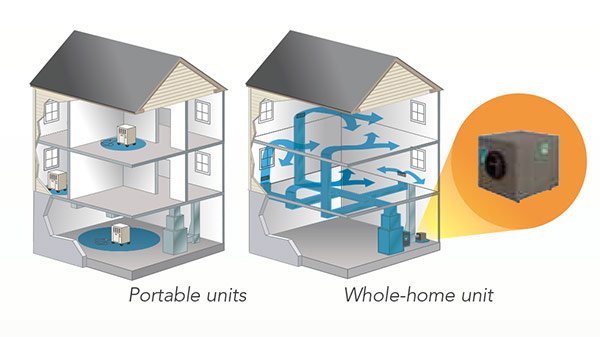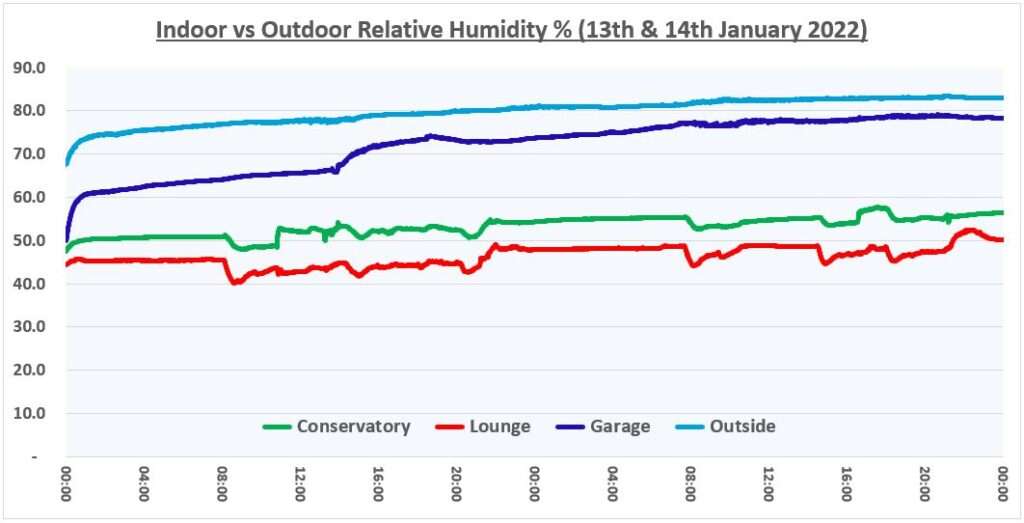Table Of Content

For test results and more options, CR members can check our complete humidifier ratings, which include units that range from personal size all the way up to consoles that can humidify 1,000 square feet or more. It can also be helpful to babies and children, pets, and items you own. Read on for details, and to see top choices from Consumer Reports’ humidifier tests for the best humidifiers for different-sized spaces in your home.
Open the dishwasher to allow dishes to air dry.
Yes, the same briquettes employed for grilling food—as long as they are natural, and free of mesquite and other additives—will absorb moisture and smells to improve the indoor environment. Put the briquettes in baskets or trays around the house, hang them up in old socks, or place them on shelves in any rooms that feel too humid. One of the most effective ways to increase the humidity level in the house is with a whole-house humidifier or a portable humidifier, depending on your needs. If you live in a dry climate, like many states in the Southwest Region of the U.S., installing a whole-house humidifier to your heating and air conditioning system is a good investment to consider.

Quarter-acre property a 'whimsical environment'

When you live in an area with high humidity, this moisture can seep into your home to increase the humidity. Iowa, Michigan, Minnesota, and Wisconsin form the Upper Midwest climate zone, where the summers are hot, and the winters are freezing. At temperatures below the dew point, dew droplets will form from the excess moisture. I’ll also cover ways to reduce the humidity in your home for better respiratory health and the protection of your home’s structure. When you weatherstrip around your windows and doors, you create an airtight seal that prevents humidity from outside seeping into your home.
Replace an old air conditioner to lower the humidity and achieve a comfortable humidity level.
When the humidity level deviates from the set point, the humidistat triggers the humidifier or dehumidifier to activate or deactivate accordingly. Herman says that simple changes, such as using a dehumidifier during humid months or a humidifier in dry conditions, can make a significant difference. According to the Environmental Protection Agency, the optimal indoor humidity is 30% to 50%. However, exceeding 60% can lead to issues such as mold growth and respiratory problems. Your heating and cooling systems can play a key role in keeping humidity at bay.
Plug in a portable humidifier.
At the diner in Sacramento, Hornik told the crowd that her plan to sue states for alleged civil rights violations should be easier than challenging results based on election laws. Hornik said they have completed examinations of voter rolls in Ohio, Illinois, New York and Texas, and they are finishing that work in California. Hornik became involved in an online community questioning election results while stuck at home during the early months of the COVID-19 pandemic, then went on to create a group called New York Citizens Audit in 2021. Its members spread conspiracy theories about the results of the 2020 and 2022 elections at events across the state.
More in Heating & Cooling
The dew point is an important measure that helps us understand the interaction of these different factors. Your air conditioner will naturally decrease the humidity in your home by removing warm air and introducing cool air. Make sure you change the AC filter frequently in order to maximize the airflow. If your HVAC partner isn’t listening to your problems in this manner, they’re not really looking out for you.
What Should The Humidity Be In The House? A Toxicologist Explains mindbodygreen - mindbodygreen
What Should The Humidity Be In The House? A Toxicologist Explains mindbodygreen.
Posted: Thu, 06 Dec 2018 08:00:00 GMT [source]
This means that the air contains 30-50% of the maximum possible moisture that it otherwise could. Keeping it in this range helps prevent the growth of harmful mold and mildew and the presence of dust mites. If you want to measure your home’s humidity you’ll need a hygrometer. This small tool can be placed in a living space that’s a good distance away from a bathroom or kitchen where moisture is created.
Boil water on the stove when you’re at home.
Homeowners can look for wall discoloration, bubbling paint or wallpaper, a dripping sound, or a musty smell. If any of these are present, they’ll want to contact a professional for plumbing leak repair. If you’ve been exposed to mold, you can clean it while wearing a mask and fix any moisture problems so that the mold doesn’t return. You can also contact a restoration company to clean up the mold if the problem is extensive. Today’s Homeowner exists to help you maintain or improve your home safely and effectively. We uphold strict editorial standards and carefully vet the advice and resources referenced in our articles.
Mould-related sickness is on the rise, and this doctor is urging people to check their homes for the fungus - ABC News
Mould-related sickness is on the rise, and this doctor is urging people to check their homes for the fungus.
Posted: Wed, 28 Feb 2024 08:00:00 GMT [source]
An idea that everyone has the right and the chance to work hard, live comfortably, and have prosperity throughout their life. The hurricane season of June, July, August, and September brings intense storms with hot, humid conditions. The climate here is subtropical, with much of the year being warm or hot with mild winters.
Your HVAC system should control the home humidity, but you might need a home humidifier to improve the comfort level if the relative humidity in your area is extremely high. Everything else being equal, the higher the temperatures in any environment, the lower the relative humidity. The reverse holds true for cooler air; it has higher relative humidity.
Missing the mark on your home’s indoor humidity levels can lead to poor indoor air quality (IAQ) and severe health concerns. Whole-house dehumidifiers are a special type of HVAC system designed to regulate and maintain optimal humidity levels throughout a home. They are part of the home’s central heating and cooling system (and as such, require professional installation) and work to reduce excess moisture in the air. Additionally, these systems can help prevent the proliferation of pests such as dust mites and insects. You may already know that heating a home can decrease relative humidity levels.
High humidity in your home can be an uncomfortable and unhealthy situation. There are many DIY methods for managing indoor moisture levels, but there are also certain situations that may require the expertise of a professional. Portable dehumidifiers are great for rooms without air conditioning, like basements, attics, and laundry rooms.
In colder climes, you should aim for an indoor relative humidity between 30 and 40 percent; any more will create condensation, according to Energy Star. Installing a whole-house dehumidifier is the best way to remove excess humidity from your indoor air. Unlike whole-home humidifiers that add moisture to the air, whole-house dehumidifiers use the refrigerant cycle to remove humidity and drain it outside your home. Typically integrated with your home’s HVAC system, you can install many common models in stand-alone applications for installation versatility. Whole-house dehumidifiers typically require dedicated 120 or 240-volt electrical circuits and a drain line to the home’s exterior. Pricing can vary by model and installing contractor, but homeowners typically expect to spend between $1,100 and $2,900 for the product, installation materials, and labor.

No comments:
Post a Comment